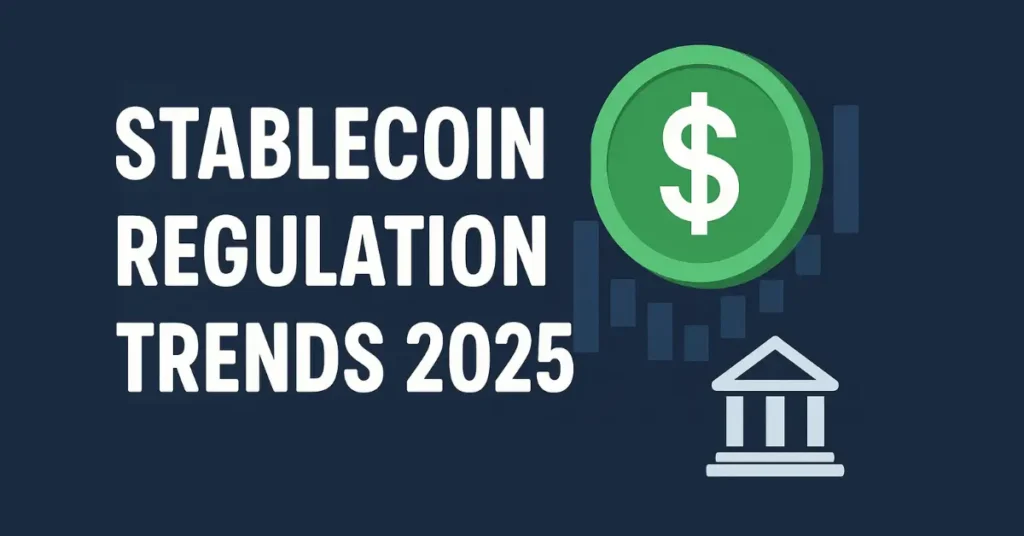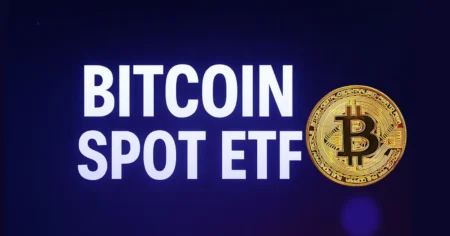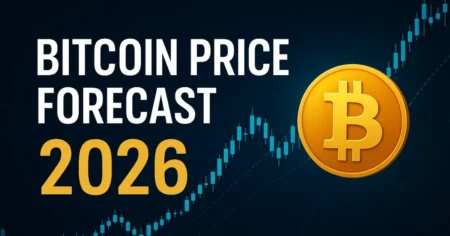Stablecoin regulation trends 2025
Introduction to Stablecoins
What are Stablecoins?
Stablecoins are a unique category of digital assets designed to maintain price stability by pegging their value to traditional currencies like the U.S. dollar, commodities such as gold, or even a basket of assets. Unlike Bitcoin or Ethereum, which are prone to extreme price swings, stablecoins offer predictability. This predictability makes them an attractive choice for both retail investors and institutions seeking a bridge between traditional finance and blockchain-based innovations.
Think of stablecoins as the “digital equivalent of cash.” If Bitcoin is digital gold, then stablecoins are digital dollars—flexible, transferable, and globally accessible. The most popular stablecoins today include USDT (Tether), USDC (Circle), and DAI (MakerDAO).
Their use cases go beyond just trading on exchanges. Stablecoins play a vital role in decentralized finance (DeFi), remittances, cross-border payments, and even payroll for blockchain-based businesses. They have become so embedded in the crypto economy that they now represent trillions of dollars in annual transaction volume.
But with great growth comes great scrutiny. Stablecoins touch upon sensitive areas of monetary policy, financial stability, and consumer protection. Regulators across the globe are increasingly aware that stablecoins aren’t just a niche innovation—they’re becoming critical infrastructure in the digital economy. And that’s where regulation steps in.
Why Stablecoins Matter in the Crypto Market
Stablecoins are the lifeblood of the crypto ecosystem. They serve as the primary medium of exchange on most crypto exchanges, providing traders with a quick way to move funds without relying on traditional banks. When markets swing wildly, traders often “park” their money in stablecoins to avoid volatility.
In DeFi, stablecoins act as collateral in lending protocols, liquidity pools, and yield farming strategies. Without them, the entire DeFi sector would struggle to function smoothly. Beyond DeFi, they are also powering a quiet revolution in payments. For example, migrant workers can send stablecoins to their families abroad, often at a fraction of the cost of traditional remittance services.
From an investor’s perspective, stablecoins provide stability without completely leaving the crypto space. They allow people to hold digital assets without being exposed to the rollercoaster ride of Bitcoin or Ethereum prices.
But here’s the catch: the more they become integrated into financial systems, the more governments feel the need to step in. Regulators are asking tough questions: Are stablecoins truly backed by reserves? Could they pose risks to the broader financial system? And how do we prevent them from being used in money laundering or terrorism financing?
All these concerns are why 2025 is shaping up to be a defining year for stablecoin regulation.
Stablecoins vs Traditional Cryptocurrencies
At first glance, stablecoins and traditional cryptocurrencies might look similar—they’re both digital tokens living on blockchains. But their core purposes differ dramatically.
- Volatility vs Stability: Bitcoin is famous for its volatility, often moving 5–10% in a single day. Stablecoins, in contrast, are engineered to stay stable, usually at $1.
- Investment vs Utility: Bitcoin and Ethereum are often viewed as investments or speculative assets, while stablecoins are primarily used as a medium of exchange.
- Regulatory Treatment: Regulators often view Bitcoin as a commodity and Ethereum as a platform for innovation. Stablecoins, however, straddle the line between money and security—making them a hot topic for lawmakers.
- One way to think of it is this: traditional cryptocurrencies are like stocks or commodities that investors buy hoping they’ll increase in value. Stablecoins are more like a digital checking account—people use them for spending, saving, and transferring value.
This distinction is exactly why regulators are putting so much focus on stablecoins in 2025. They’re not just digital assets anymore—they’re functioning more like money. And when something acts like money, governments want oversight.
The Evolution of Stablecoin Regulation
Early Regulatory Approaches (2017–2020)
Back in the early days, regulators didn’t quite know what to do with stablecoins. Between 2017 and 2020, most oversight was light-touch, with authorities focusing more on Bitcoin and ICOs. Stablecoins were often overlooked, partly because they were small and seen as niche.
However, as Tether’s market cap began to soar, questions about transparency emerged. Critics accused Tether of not being fully backed by U.S. dollars, raising fears of systemic risks. Still, most regulators hesitated to take strong action, preferring to wait and see.
This period was marked by uncertainty. Some countries, like Japan, started exploring rules for crypto exchanges that also covered stablecoins. Others, like the U.S., were slow to act, leading to a patchwork of state-level rules rather than a unified federal framework.
In hindsight, the lack of early regulation may have allowed stablecoins to grow unchecked. By 2020, they were already becoming too big to ignore, setting the stage for the regulatory battles we see today.
Shifts in U.S. Policy and Oversight
By 2021, U.S. regulators began taking a harder stance. Reports from the Treasury and the President’s Working Group highlighted risks associated with stablecoins, especially regarding consumer protection, systemic stability, and illicit finance.
The turning point came with the collapse of Terra’s algorithmic stablecoin in 2022, which wiped out billions in value and shook public confidence. While algorithmic stablecoins differ from fiat-backed ones like USDC, the fallout made regulators realize the potential dangers of unregulated growth.
Since then, U.S. lawmakers have pushed for legislation specifically targeting stablecoins. The debate often centers on who should have jurisdiction—the SEC, CFTC, or Federal Reserve—and what standards should apply for reserves, audits, and consumer protections.
2025 marks the year where many of these discussions are expected to materialize into concrete law. With bipartisan bills in Congress and increasing pressure from the White House, the U.S. is poised to set clearer rules that could shape the future of the entire global stablecoin market.
International Perspectives on Stablecoin Regulation
Globally, the regulatory landscape is equally dynamic. Europe has taken the lead with its Markets in Crypto-Assets (MiCA) framework, which directly addresses stablecoins and requires issuers to meet transparency and reserve standards. Japan, Singapore, and Switzerland are also crafting rules designed to balance innovation with oversight.
In emerging markets, the picture is more complex. Countries facing inflation and currency instability, such as Argentina and Turkey, see stablecoins as a lifeline for their citizens. This has created tension between governments trying to maintain control over monetary policy and citizens seeking stability in U.S.-dollar pegged tokens.
China, meanwhile, has banned most crypto activities but is heavily pushing its digital yuan, signaling that it sees stablecoins as competition to its own central bank digital currency (CBDC).
As of 2025, the global regulatory environment is fragmented but converging. Most nations now recognize the need for stablecoin oversight, but approaches differ widely. This patchwork is both a challenge and an opportunity for businesses and investors navigating the space.
Why 2025 is a Turning Point for Stablecoin Regulation
The Rise of CBDCs and Their Impact
Central Bank Digital Currencies (CBDCs) are reshaping the conversation around stablecoins. The U.S. hasn’t fully rolled out a digital dollar yet, but China, the EU, and dozens of other nations are piloting or launching their own CBDCs.
CBDCs are government-backed and offer the same benefits as stablecoins—fast, digital, borderless payments—but with state-level oversight. This raises big questions: Will CBDCs make stablecoins obsolete? Or will they coexist, serving different needs?
Many analysts believe stablecoins will continue to thrive because they’re more flexible, programmable, and innovation-friendly compared to government-issued CBDCs. However, regulators are wary of competition between public and private digital money. This tension is a key reason why 2025 is such a critical year for stablecoin regulation.
Why 2025 is a Turning Point for Stablecoin Regulation (Continued)
Growing Market Capitalization of Stablecoins
Stablecoins have grown from a few billion dollars in circulation five years ago to hundreds of billions today. By 2025, the combined market capitalization of stablecoins is projected to rival that of some of the largest banks in the world. This explosive growth has caught the attention of policymakers and regulators.
Why does this matter? Because when something grows big enough to impact financial markets, regulators step in. Imagine stablecoins as “shadow banks”—they hold reserves, issue tokens, and facilitate lending, but without the same oversight that traditional banks face. If a stablecoin issuer were to collapse, it could ripple across global financial systems just like the 2008 banking crisis.
In fact, several U.S. lawmakers have already compared stablecoin issuers to money-market funds. That means reserve transparency, audits, and redemption rights are now at the top of regulatory agendas. Stablecoins can no longer fly under the radar—they’re simply too important to ignore.
Political and Economic Pressures in the U.S.
The U.S. dollar is the world’s reserve currency, and stablecoins pegged to the dollar reinforce this dominance in global trade. However, policymakers worry about losing control if private companies effectively issue their own “digital dollars.”
In 2025, with an election cycle in full swing and growing debates about financial innovation, stablecoins have become a political talking point. On one side, supporters argue that clear regulation will boost U.S. competitiveness and cement the dollar’s role in the digital economy. On the other side, critics warn that stablecoins could undermine monetary policy if left unchecked.
Economic pressures add another layer. With inflationary concerns, global debt issues, and geopolitical tensions, regulators are cautious about letting private digital money flourish without safeguards. In short, politics and economics are pushing stablecoin regulation to the top of Washington’s priority list.
U.S. Stablecoin Regulation Trends in 2025
SEC, CFTC, and Federal Reserve Roles
- The biggest regulatory question in the U.S. is: Who regulates stablecoins?
- The SEC argues that some stablecoins might qualify as securities, especially those tied to lending or earning yield.
- The CFTC views certain stablecoins as commodities, similar to foreign currencies.
- The Federal Reserve focuses on systemic risk, ensuring that stablecoins don’t destabilize payment systems or threaten the broader economy.
This tug-of-war has created uncertainty for crypto firms, but in 2025 we’re seeing a push toward clearer definitions. Lawmakers are pushing to divide responsibilities: the Fed oversees systemic risk, the CFTC handles commodity aspects, and the SEC focuses on investor protection. While not perfect, this shared approach may finally give businesses clarity on compliance.
The Impact of the Clarity for Payment Stablecoins Act
One of the most significant legislative developments in 2025 is the Clarity for Payment Stablecoins Act, which is expected to set nationwide rules for dollar-backed stablecoins. The Act includes:
- Reserve requirements – stablecoins must be fully backed by safe assets like cash or U.S. Treasuries.
- Redemption rights – holders can always exchange stablecoins 1:1 for dollars.
- Auditing standards – issuers must publish regular, independent audits to prove reserves.
- Licensing framework – stablecoin issuers must register either federally or through state banking regulators.
This law could be a game-changer, offering legitimacy to compliant stablecoins like USDC while forcing questionable issuers to clean up or shut down. For consumers and businesses, it means safer, more trustworthy stablecoin options.
State-Level Regulation vs Federal Oversight
The U.S. has a history of fragmented regulation, with states often creating their own rules. For example, New York’s “BitLicense” framework has long been a benchmark for crypto compliance.
In 2025, some states are taking a proactive role in regulating stablecoins, while others prefer to wait for federal guidance. This creates a patchwork system where a stablecoin might be legal in one state but restricted in another.
The push for federal oversight aims to unify these rules. However, states argue they should retain the ability to protect local consumers and encourage innovation. The outcome of this federal vs state debate will shape the competitive landscape for stablecoin issuers in the U.S.
Global Stablecoin Regulation Trends in 2025
European Union’s MiCA Implementation
The EU’s Markets in Crypto-Assets (MiCA) regulation officially went into effect in 2024, and by 2025, its impact is being fully felt. MiCA provides one of the most comprehensive regulatory frameworks for stablecoins, requiring:
- Clear reserve backing and disclosures
- Licensing of issuers across the EU
- Consumer protection safeguards
This has given Europe a reputation for regulatory clarity, attracting stablecoin projects that want a predictable environment. For U.S. companies, however, MiCA creates competitive pressure: if Europe offers clarity while the U.S. delays, innovation could shift overseas.
Asian Markets – Japan, Singapore, and South Korea
Asia has become a hotspot for crypto adoption, and stablecoins are no exception.
Japan legalized certain stablecoins in 2023, ensuring they are issued only by licensed institutions like banks.
Singapore has established itself as a global crypto hub, balancing innovation with oversight. Its Monetary Authority requires stablecoins to be fully backed and regularly audited.
South Korea has introduced strict rules for stablecoin issuers after past crypto scandals, focusing heavily on investor protection.
Together, these countries demonstrate Asia’s pragmatic approach: embrace the technology, but regulate it tightly to prevent abuse.
Emerging Markets and Stablecoin Adoption
In countries like Nigeria, Argentina, and Turkey, citizens are turning to stablecoins to escape inflation and currency instability. For many people, stablecoins are more reliable than their local currencies.
However, this creates tension with governments, which fear losing control over monetary policy. Some nations have responded with outright bans, while others are experimenting with central bank digital currencies to compete with stablecoins.
In 2025, emerging markets will remain a testing ground for the real-world use of stablecoins. If adoption continues to rise, regulators may face a difficult choice: restrict stablecoins or embrace them as part of the financial system.
Balancing Innovation and Consumer Protection
One of the hardest challenges regulators face in 2025 is finding the right balance between fostering innovation and protecting consumers. On the one hand, stablecoins have opened the door to faster, cheaper, and more inclusive financial services. On the other hand, the risks of fraud, mismanagement, and instability cannot be ignored.
For example, a poorly managed stablecoin could collapse overnight if reserves are insufficient, leaving holders with worthless tokens. That’s not just a consumer protection issue—it could also spark wider financial contagion. Regulators must ensure that issuers operate transparently and responsibly without crushing innovation under excessive red tape.
The debate often comes down to how strict the rules should be. Too light, and consumers are at risk. Too heavy, and entrepreneurs will take their businesses elsewhere. The U.S. is particularly sensitive to this issue since being overly strict could push innovation to Europe or Asia.
Stablecoin Reserves and Transparency Issues
The single biggest concern for regulators is whether stablecoins are truly backed by reserves. If an issuer claims each token equals $1, they need to prove they actually hold that dollar—or a safe equivalent like short-term U.S. Treasuries.
Historically, some issuers have faced accusations of misrepresenting reserves. Tether, for example, has been criticized for not always being fully transparent about its backing. These issues fuel regulatory demands for independent, frequent audits and clear public disclosures.
By 2025, leading stablecoins like USDC have embraced transparency as a selling point, publishing monthly reserve reports. But regulators want more consistency across the board, ensuring that all issuers meet the same high standard. Without transparency, confidence in stablecoins can collapse quickly, which is why this issue remains at the forefront of regulation.
Cross-Border Payments and Jurisdiction Conflicts
Stablecoins aren’t bound by national borders—they flow seamlessly across countries and blockchains. That makes them powerful for global payments but also a nightmare for regulators.
For instance, if a U.S.-issued stablecoin is used in Africa or Asia, who has the authority to oversee those transactions? What happens if the issuer follows U.S. rules but local regulators demand stricter controls? These jurisdictional conflicts create uncertainty for both businesses and users.
Cross-border issues are also tied to concerns about money laundering and terrorism financing. Regulators want strong anti-money laundering (AML) and know-your-customer (KYC) controls, but enforcing them globally is a huge challenge.
By 2025, international cooperation is improving, but it’s still fragmented. The Financial Stability Board (FSB) and other global institutions are pushing for aligned standards, yet countries continue to apply rules differently. For businesses, this means navigating a complex regulatory maze when operating globally.
Stablecoin Regulation and Financial Innovation
Stablecoins in Decentralized Finance (DeFi)
DeFi has exploded in popularity, and stablecoins are its backbone. Lending platforms, decentralized exchanges, and yield protocols all rely heavily on stablecoins as collateral and liquidity. Without them, DeFi would struggle to function.
But this reliance raises regulatory questions. If stablecoins fuel decentralized lending at scale, regulators worry about “shadow banking” risks outside traditional oversight. They want to ensure that DeFi platforms using stablecoins comply with financial stability and consumer protection standards.
Some regulators are exploring how existing laws might apply to DeFi protocols. Others are considering new frameworks specifically tailored to decentralized systems. For innovators, this means preparing for stricter requirements in how they integrate stablecoins into DeFi services.
Role in Remittances and Global Payments
Stablecoins are transforming global remittances, offering faster and cheaper alternatives to traditional services like Western Union. For millions of migrant workers, stablecoins mean sending money to family abroad in minutes instead of days, with fees as low as a fraction of a percent.
This real-world use case highlights the social value of stablecoins. However, it also makes them politically sensitive. Governments worry about losing oversight of international money flows, especially when it comes to taxes, sanctions, and AML compliance.
Regulators in 2025 are paying close attention to cross-border remittance corridors powered by stablecoins. Some countries are experimenting with hybrid models, where regulated financial institutions partner with blockchain platforms to offer compliant remittance services. This may be the future of global payments: stablecoins backed by strong regulatory oversight but still offering the efficiency of blockchain technology.
Potential Use in Traditional Banking
Stablecoins are no longer just for crypto enthusiasts—they’re making their way into mainstream finance. Several banks are now exploring how to integrate stablecoins into payments, lending, and custody services.
Imagine being able to transfer money from your checking account into a stablecoin instantly, then use it for global transactions or DeFi yields. For banks, stablecoins could reduce costs and improve efficiency in areas like cross-border settlements.
However, regulators want to ensure banks don’t take on unnecessary risks. That means banks adopting stablecoins must meet the same compliance and reserve standards as crypto-native issuers. Some regulators even see stablecoins as a bridge toward eventual CBDC adoption, with banks acting as intermediaries.
In 2025, the line between crypto and traditional banking is blurring. Stablecoins are at the heart of this convergence, forcing regulators to rethink how money moves in the digital era.
Risks of Overregulation
Stifling Innovation in the Crypto Market
One of the biggest risks of heavy-handed regulation is that it could choke innovation. Startups thrive in environments where they can experiment, but overly strict rules make it harder for new ideas to gain traction.
For instance, if stablecoin issuers face the same compliance costs as major banks, smaller players may be pushed out of the market entirely. That could leave only a handful of big corporations in control of stablecoins, stifling competition and diversity.
The challenge for regulators is to avoid turning the stablecoin market into an oligopoly controlled by a few big players. Innovation happens fastest at the edges, and if smaller startups are excluded, the U.S. risks losing its competitive edge.
Pushing Innovation Offshore
If the U.S. imposes overly restrictive rules, crypto entrepreneurs may simply relocate to friendlier jurisdictions. This is already happening: many blockchain projects have moved to Europe, Singapore, or Dubai, where rules are clearer and sometimes more supportive.
This trend has broader implications. If stablecoin innovation moves offshore, the U.S. could lose influence over how digital money evolves globally. That would weaken the dollar’s dominance in international trade and finance.
Regulators know this, which is why there’s increasing pressure in Washington to find a balanced approach. The U.S. wants to lead in financial innovation, not drive it away. But finding that middle ground is easier said than done.
Impact on Startups and FinTech Growth
For startups, compliance costs can make or break their business model. A large bank might be able to absorb millions in legal and regulatory expenses, but a small crypto startup cannot.
In 2025, many fintech founders worry that new stablecoin rules could tilt the playing field toward established players. This is why industry groups are lobbying hard for proportionate regulation—rules that scale based on the size and risk of the issuer.
Without careful regulation, the risk is clear: startups could disappear, innovation could slow, and the U.S. could miss out on the next wave of financial technology growth.
The Future of Stablecoins in the U.S.
Potential Pathways for Regulation
By 2025, several potential paths for U.S. stablecoin regulation are emerging. One path involves treating stablecoin issuers like banks, requiring full reserve backing and strict compliance. Another approach focuses on creating a unique licensing system tailored for stablecoin companies—lighter than banking rules but stricter than traditional fintech standards.
A third possibility is a hybrid model, where large systemic issuers (like USDC and Tether) face tougher scrutiny, while smaller issuers enjoy lighter rules. This “tiered” system could balance innovation with systemic safety, similar to how financial institutions are regulated based on their size and risk profile.
The direction regulators take will shape the U.S. crypto landscape for decades. If they move toward clarity and proportionality, stablecoins could flourish as a cornerstone of digital payments. But if rules are too heavy-handed, innovation may stagnate, and the U.S. risks falling behind other financial hubs.
Role of Stablecoins in U.S. Dollar Dominance
One of the strongest arguments in favor of supporting stablecoins is that they reinforce U.S. dollar dominance. Right now, most stablecoins are dollar-backed, meaning that when people in emerging markets adopt them, they’re essentially adopting the dollar.
This is a powerful geopolitical advantage. Stablecoins extend the dollar’s reach into areas where U.S. banks have limited access, from Africa to South America. In effect, stablecoins act as digital ambassadors of the dollar, maintaining its supremacy in global trade.
If the U.S. overregulates stablecoins, it risks ceding this advantage. Other countries could push euro-, yen-, or yuan-backed stablecoins, challenging the dollar’s dominance. For policymakers, this isn’t just about crypto—it’s about maintaining America’s financial leadership in a rapidly digitizing world.
Predictions for Market Growth
Looking ahead, most analysts expect the stablecoin market to grow significantly through 2025 and beyond. With clearer regulations, mainstream adoption will accelerate. Businesses will increasingly use stablecoins for settlements, payroll, and cross-border payments.
We may also see more diversification in stablecoin types. Beyond dollar-backed tokens, there could be growth in euro, yen, and commodity-backed stablecoins, especially in international markets. Algorithmic stablecoins might make a cautious return, but with stricter safeguards and regulatory oversight.
Overall, stablecoins are unlikely to remain a niche innovation. By the end of the decade, they may account for a major share of global digital transactions, shaping the future of money itself.
Case Studies of Stablecoin Regulation
USDC – A Model for Compliance
USDC, issued by Circle, is widely regarded as one of the most compliant and transparent stablecoins in the market. It publishes regular audits, is fully backed by U.S. Treasuries and cash, and actively engages with regulators.
In 2025, USDC has positioned itself as the “safe” choice for institutions and businesses. Many banks, fintechs, and payment companies prefer integrating USDC because of its regulatory-friendly approach. If the U.S. passes stablecoin legislation, USDC is well-placed to benefit, potentially becoming the industry standard.
Tether (USDT) and Its Controversies
Tether remains the largest stablecoin by market cap, but it has faced years of criticism over transparency and reserve management. While it has made progress in disclosing its reserves, doubts remain about its full compliance with regulatory expectations.
In 2025, Tether’s sheer size makes it too big to ignore. Regulators may impose stricter requirements on Tether to ensure it doesn’t pose systemic risks. Despite controversies, its liquidity and dominance in global markets—especially outside the U.S.—keep it highly relevant.
Algorithmic Stablecoins After Terra Collapse
The collapse of Terra’s algorithmic stablecoin in 2022 was one of the biggest disasters in crypto history. It erased tens of billions in value and triggered massive regulatory scrutiny. Since then, algorithmic stablecoins have been largely avoided by regulators and investors alike.
However, by 2025, new models are cautiously emerging. Some projects are experimenting with hybrid designs—partially collateralized, partially algorithmic—while prioritizing transparency and risk controls. Whether these models gain traction depends largely on regulatory acceptance. For now, they remain experimental compared to fiat-backed tokens like USDC and USDT.
How Businesses Can Prepare for Stablecoin Regulation
Compliance Strategies for Crypto Firms
For businesses working with stablecoins, compliance is no longer optional in 2025—it’s essential. Firms must implement robust compliance strategies, including AML/KYC processes, reserve transparency, and adherence to federal and state laws.
Those who get ahead of regulation will gain a competitive edge. For example, partnering with licensed custodians, hiring compliance officers, and engaging with regulators proactively can help firms stay ahead of the curve. Businesses that treat compliance as a strategic investment, not just a cost, will be better positioned to thrive in a regulated environment.
The Role of Legal Counsel and Advisors
Legal expertise has become critical for businesses navigating stablecoin regulation. The rules are complex, overlapping federal and state jurisdictions, and evolving rapidly. Having knowledgeable legal counsel ensures companies don’t face penalties, shutdowns, or reputational damage.
In fact, many crypto startups in 2025 are hiring compliance advisors early, even before product launch. This signals to investors and regulators that they’re serious about operating within the law. A proactive legal strategy is no longer just “nice to have”—it’s a necessity in today’s regulatory landscape.
Leveraging Regulatory Clarity for Growth
While regulation may seem burdensome, it also creates opportunities. Once the rules are clear, businesses can innovate with confidence. Institutional investors—often hesitant to engage with unregulated assets—will feel safer entering the market.
For example, payment processors, fintech apps, and even traditional banks are more likely to adopt stablecoins once federal legislation is in place. This could lead to massive growth in stablecoin-powered products, from cross-border settlements to digital wallets.
In short, regulation can be a growth catalyst if businesses adapt quickly and leverage clarity as a competitive advantage.
Tips for Investors Navigating Stablecoin Regulation
Choosing Safer Stablecoins
For investors, the safest approach in 2025 is to stick with stablecoins that are transparent, fully backed, and compliant with regulations. USDC is often considered the gold standard, while Tether remains widely used but comes with more risk due to lingering questions about reserves.
Investors should avoid unverified or experimental stablecoins unless they’re willing to take on higher risk. Transparency reports, audits, and regulatory licenses are key factors to check before trusting a stablecoin.
Monitoring Regulatory Updates
Stablecoin regulation is evolving rapidly, and investors must stay informed. A new law or enforcement action could dramatically affect the safety and usability of certain tokens. Following updates from agencies like the SEC, CFTC, and Federal Reserve, as well as international regulators, is crucial.
Subscribing to reliable crypto news outlets, regulatory briefings, and financial research can help investors stay ahead of changes. Ignoring regulation in 2025 is simply not an option—it’s a key factor in investment strategy.
Risk Management Strategies
Even with regulation, no investment is risk-free. Investors should diversify their stablecoin holdings and avoid putting all their funds into a single token. Using multiple custodial solutions—such as regulated exchanges and institutional-grade wallets—adds an extra layer of protection.
Additionally, investors should consider the purpose of their stablecoin holdings. Are they using them for trading, yield farming, or long-term storage? Each use case comes with different risks and requires different strategies. The golden rule: treat stablecoins like any financial product—manage risk wisely.
Long-Term Outlook on Stablecoin Regulation
Integration with Central Bank Digital Currencies (CBDCs)
One of the biggest questions for the future of stablecoins is how they will coexist with central bank digital currencies (CBDCs). By 2025, several countries—including China with its digital yuan and the EU with its digital euro—are already piloting or deploying CBDCs.
The U.S. has been more cautious, but discussions about a digital dollar are heating up. If and when it launches, a digital dollar could compete directly with private stablecoins. However, many experts believe they will complement each other rather than compete.
CBDCs will likely focus on government-backed payment systems, while stablecoins will remain more flexible, programmable, and integrated with decentralized finance. For instance, businesses might use CBDCs for payroll but rely on stablecoins for cross-border settlements and DeFi lending.
In the long term, stablecoins could act as the “innovation layer” on top of CBDCs, bringing programmability and blockchain-native features that central banks are unlikely to provide.
Stablecoins as a Bridge to Web3 Adoption
Stablecoins are not just about payments—they are becoming the entry point to Web3. For millions of new users, the first digital asset they interact with isn’t Bitcoin or Ethereum, but a dollar-backed stablecoin.
Why? Because stablecoins feel familiar. They represent dollars, euros, or other real-world currencies, making them less intimidating than volatile cryptocurrencies. This familiarity is key to onboarding mainstream users into Web3 applications, from gaming to decentralized finance.
As stablecoins integrate with Web3 wallets, payment platforms, and smart contracts, they could become the gateway to a broader digital economy. Regulators, recognizing this, are beginning to see stablecoins as critical infrastructure for Web3 growth.
Regulatory Convergence Across Borders
One of the most important long-term trends is the gradual convergence of global regulations. While every country has its own approach, international cooperation is increasing. Organizations like the Financial Stability Board (FSB) and the International Monetary Fund (IMF) are pushing for common standards on reserve transparency, audits, and AML/KYC compliance.
By 2030, we may see a global baseline framework for stablecoins, much like the Basel Accords for banking. This would give issuers more clarity and reduce the risks of jurisdictional arbitrage, where companies move to the friendliest regulatory environment.
Convergence won’t happen overnight, but 2025 marks the beginning of this process. The need for cross-border coordination is becoming too strong to ignore, especially as stablecoins power trillions of dollars in global transactions.
Expert Insights on Stablecoin Regulation Trends
Opinions from Policymakers
Many U.S. policymakers now recognize stablecoins as both a risk and an opportunity. Senator Cynthia Lummis, for example, has been vocal about creating a balanced regulatory framework that supports innovation while ensuring financial stability. On the other hand, more cautious lawmakers emphasize consumer protection, calling for stricter oversight to prevent another “Terra-like” collapse.
Globally, European leaders point to MiCA as proof that effective regulation is possible. Asian policymakers emphasize the importance of integrating stablecoins into existing financial systems rather than banning them outright. The consensus among policymakers is clear: stablecoins are here to stay, but they need guardrails.
Perspectives from Crypto Entrepreneurs
Crypto founders often stress that overregulation could push innovation offshore. Many argue that stablecoins are the best tool to expand financial inclusion worldwide and that excessive restrictions will slow progress.
Some entrepreneurs also highlight the benefits of working with regulators. Companies like Circle have embraced compliance, showing that regulation can actually be a competitive advantage. Others, however, warn that smaller startups may not survive the rising costs of compliance, leading to industry consolidation.
Academic and Financial Analyst Views
Academics and analysts generally agree that stablecoins will become a permanent fixture in global finance. Many compare them to money market funds in the traditional system—useful but requiring oversight to prevent instability.
Some analysts predict that stablecoins could eventually rival Visa or Mastercard in global payments volume. Others argue that stablecoins will primarily serve as bridges until CBDCs become more widespread. Either way, the outlook is that regulation in 2025 will define the next phase of their growth.
Conclusion
Summary of Key Trends
Stablecoins have moved from a niche innovation to a global financial force. In 2025, they are at a crossroads—too big to ignore, yet still evolving under fragmented regulations. The U.S., EU, and Asia are leading the charge in shaping rules, while emerging markets highlight the real-world demand for stablecoins.
What to Expect in the Coming Years
Expect regulation to tighten across the board, with clearer frameworks for reserves, audits, and consumer protection. At the same time, innovation will continue, especially in cross-border payments, DeFi, and Web3 applications. Stablecoins won’t disappear—in fact, they’ll likely grow stronger under clearer rules.
Final Thoughts on Stablecoin Regulation in 2025
Stablecoins represent both a challenge and an opportunity. If regulated wisely, they could strengthen the U.S. dollar, drive financial inclusion, and accelerate the digital economy. If regulated poorly, they risk stifling innovation and pushing growth offshore.
The decisions made in 2025 will shape the role of stablecoins for decades. For investors, businesses, and regulators alike, this year is a turning point in the future of money.
FAQs
Will stablecoins replace traditional money in the U.S.?
No, stablecoins are unlikely to replace the dollar, but they may complement it. They act more like digital cash, offering speed and efficiency, while the dollar remains the official legal tender.
How safe are stablecoins in 2025?
The safest stablecoins are those that are fully backed by reserves, regularly audited, and compliant with regulations—such as USDC. Riskier options include those with limited transparency or algorithmic models.
How will regulation affect stablecoin investors?
Regulation will likely make stablecoins safer by requiring clearer disclosures and stronger consumer protections. However, it may also reduce the number of issuers, consolidating the market around a few compliant players.
What role do stablecoins play in DeFi?
Stablecoins are essential to DeFi, serving as collateral, liquidity, and a stable medium of exchange. Without them, most DeFi protocols would struggle to function effectively.
Could overregulation push stablecoin innovation abroad?
Yes, if the U.S. imposes overly restrictive rules, innovation could shift to Europe, Asia, or other jurisdictions with friendlier regulations. That’s why finding a balanced approach is so critical.
Also, read
- What is a crypto wallet, and how does it work? – Coinsify
- 10 Crypto Terms Every Beginner Must Know: Coinsify
- What is blockchain technology? Complete Guide – Coinsify
- How to Buy Crypto Safely in 2025: Complete Guide – Coinsify
- Bitcoin vs Ethereum: Key Differences Explained: Complete Guide
- Ultimate Blockchain Glossary: Learn Blockchain Terms Easily
- How to Buy Bitcoin Safely (Complete Beginner’s Guide)
- Top 10 Crypto Wallets for Beginners (2025 Edition)
- What is cryptocurrency? A Beginner-Friendly Guide (2025)






